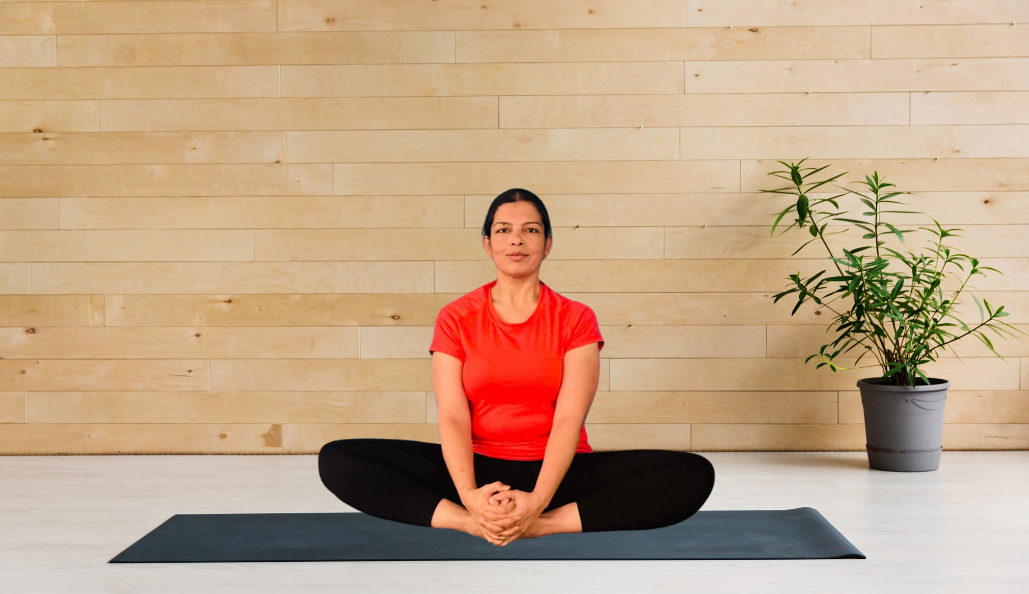Written by
admin
January 20, 2025
Yoga Poses for Managing PCOS and PCOD: A Holistic Approach
Polycystic Ovary Syndrome (PCOS) and Polycystic Ovary Disorder (PCOD) are common hormonal conditions affecting women, leading to symptoms like irregular periods, weight gain, acne, and fertility challenges. While medication and diet are essential for managing these conditions, yoga offers a holistic approach by reducing stress, balancing hormones, and improving overall well-being. It helps stimulate the reproductive system, regulate the endocrine system, and enhance emotional health, making it an ideal complementary treatment.
Yoga not only improves flexibility and circulation but also aids in weight management, which is often a concern for women with PCOS and PCOD. Certain poses help promote hormonal balance, reduce stress, and support the body's natural healing process. In this blog, we’ll explore the best yoga poses to help manage PCOS and PCOD, offering a natural, supportive approach to improving overall health and relieving symptoms.
How Yoga Helps with PCOS and PCOD
- Balances Hormones: Yoga helps regulate endocrine function, balancing hormone production.
- Reduces Stress: Chronic stress can worsen PCOS symptoms. Yoga lowers cortisol levels, promoting relaxation.
- Improves Insulin Sensitivity: Many women with PCOS experience insulin resistance, which yoga can help manage by improving metabolism.
- Promotes Weight Loss: Regular yoga practice can aid in weight management.
- Supports Reproductive Health: Certain poses stimulate the ovaries and uterus, promoting reproductive health.
Butterfly Pose (Baddha Konasana)
This gentle hip opener stimulates the ovaries, promoting better blood circulation to the pelvic area. It helps regulate menstrual cycles and supports ovarian health. The deep stretch also releases tension, improving flexibility. Regular practice can balance hormones and alleviate discomfort caused by irregular periods. This pose is especially beneficial for managing reproductive health issues like PCOS and PCOD.
How to do it:
- Sit with your legs extended.
- Bend your knees and bring the soles of your feet together.
- Hold your feet and gently flap your knees up and down like butterfly wings.
- Breathe deeply for 1-2 minutes.

Cobra Pose (Bhujangasana)
Cobra Pose stimulates the abdominal organs, enhancing blood flow to the ovaries and uterus. This improves reproductive health by promoting circulation and hormonal balance. It also helps relieve tension in the lower back and abdomen. Regular practice can support the overall functioning of the reproductive system. Cobra Pose is a beneficial addition for managing menstrual health and conditions like PCOS and PCOD.
How to do it:
- Lie on your stomach with your palms under your shoulders.
- Lie on your stomach with your palms under your shoulders.
- Hold for 15-30 seconds and exhale as you lower down
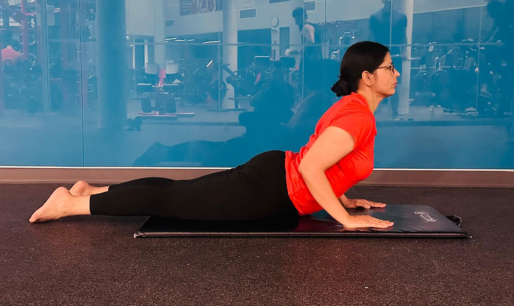
Cat-Cow Pose (Marjaryasana-Bitilasana)
This flow enhances spinal flexibility and stimulates the reproductive organs, promoting better blood circulation to the pelvic area. It supports reproductive health by balancing hormones. Regular practice can relieve tension and improve posture. This sequence helps in managing menstrual health and conditions like PCOS and PCOD. It's an excellent addition to any yoga routine for overall well-being.
How to do it:
- Start on all fours with your wrists under your shoulders and knees under your hips.
- Inhale, arch your back (Cow Pose), and look up
- Exhale, round your spine (Cat Pose), and tuck your chin.
- Repeat for 1-2 minutes.

Bridge Pose (Setu Bandhasana)
Bridge Pose helps balance hormone production by stimulating the endocrine system and improves circulation in the pelvic region. This promotes reproductive health and supports menstrual cycle regulation. Regular practice can relieve lower back tension and strengthen the glutes and core. It’s particularly beneficial for managing PCOS and PCOD symptoms. Bridge Pose is a great way to improve overall hormonal balance and pelvic health.
How to do it:
- Lie on your back with your knees bent and feet flat on the ground.
- Press into your feet and lift your hips toward the ceiling.
- Clasp your hands under your back and hold for 30 seconds.
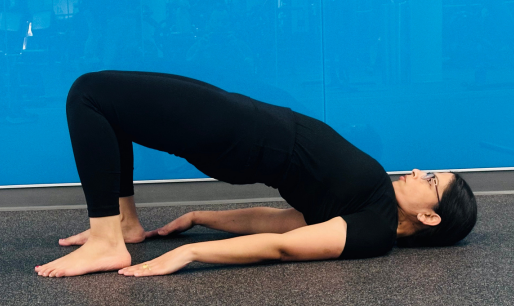
Child’s Pose (Balasana)
This restorative pose reduces stress and calms the mind by promoting relaxation and deep breathing. It helps lower anxiety and encourages a sense of peace. Regular practice supports emotional well-being and mental clarity. This pose is ideal for reducing tension and fostering a calm, balanced state of mind. It's especially helpful for managing stress-related symptoms of conditions like PCOS and PCOD.
How to do it:
- Kneel on the floor and sit back on your heels.
- Extend your arms forward and rest your forehead on the mat.
- Breathe deeply and stay for 1-2 minutes.
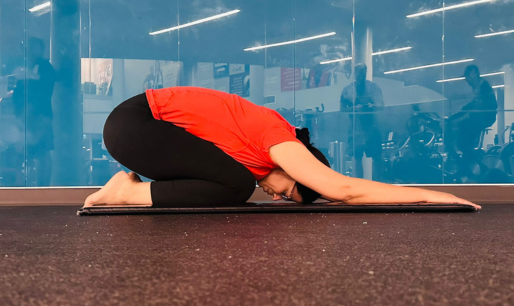
Reclining Bound Angle Pose (Supta Baddha Konasana)
Reclining Bound Angle Pose (Supta Baddha Konasana) opens the pelvic region and promotes deep relaxation. It enhances circulation in the lower body and stimulates the reproductive organs. This pose helps release tension in the hips and groin, fostering emotional and physical balance. Regular practice can improve flexibility and support overall reproductive health. It's particularly beneficial for managing menstrual discomfort and conditions like PCOS and PCOD.
How to do it:
- Lie on your back and bring the soles of your feet together, allowing your knees to fall outward.
- Place your hands on your abdomen or stretch them overhead.
- Hold for 2-3 minutes.
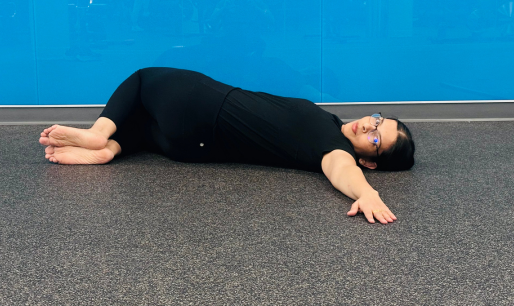
Boat Pose (Navasana)
Boat Pose (Navasana) strengthens the core and improves metabolism, aiding in the management of insulin resistance. It stimulates the digestive system and helps improve posture. Regular practice enhances overall body strength and balance. This pose also supports weight management, making it beneficial for individuals with PCOS and PCOD. It's an excellent addition to a routine aimed at boosting metabolic health and promoting hormonal balance.
How to do it:
- Sit with your legs extended and back straight.
- Lift your legs off the ground and balance on your sit bones.
- Stretch your arms forward and hold for 15-20 seconds.
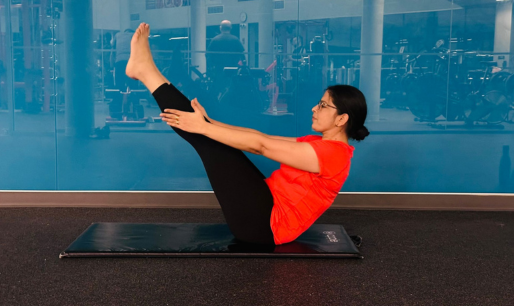
Warrior II Pose (Virabhadrasana II)
Warrior II Pose (Virabhadrasana II) enhances blood flow and strengthens the legs and pelvic region. It improves circulation to the reproductive organs and promotes stability. Regular practice helps build lower body strength and supports better posture. This pose is beneficial for improving hormonal balance and managing menstrual health. It’s particularly effective for those with PCOS and PCOD, helping to promote overall well-being.
How to do it:
- Stand with your feet wide apart.
- Turn your right foot out and bend your right knee.
- Stretch your arms parallel to the floor and hold for 30 seconds.
- Switch sides.

Pranayama (Breathing Exercises)
Pranayama (Breathing Exercises) like Nadi Shodhana (Alternate Nostril Breathing) and Kapalabhati (Skull Shining Breath) regulate stress hormones and enhance overall health. These techniques promote relaxation, improve lung capacity, and balance the nervous system. Regular practice helps reduce anxiety, support hormonal balance, and increase mental clarity. Breathing exercises are particularly helpful for managing stress and improving reproductive health in conditions like PCOS and PCOD.
How to do it:
- Sit comfortably and close your right nostril with your thumb.
- Inhale through your left nostril, then close it with your ring finger.
- Exhale through your right nostril.
- Repeat for 5-10 cycles.

Tips for Practicing Yoga for PCOS
- Consistency is Key: Practice yoga daily for 20-30 minutes to see long-term benefits.
- Combine with a Healthy Lifestyle: Pair yoga with a balanced diet and regular physical activity.
- Listen to Your Body: Avoid overexerting yourself, and modify poses as needed.
- Practice Mindfulness: Focus on your breath and stay present during your practice.
Conclusion
Yoga is a powerful tool for managing PCOS and PCOD symptoms. These asanas not only address physical symptoms but also help create a sense of inner peace and balance. By incorporating yoga into your daily routine, you can take a step closer to hormonal harmony and improved well-being.
Have you tried any of these poses? Share your experience in the comments below!
Have you tried any of these poses? Share your experience in the comments below!


